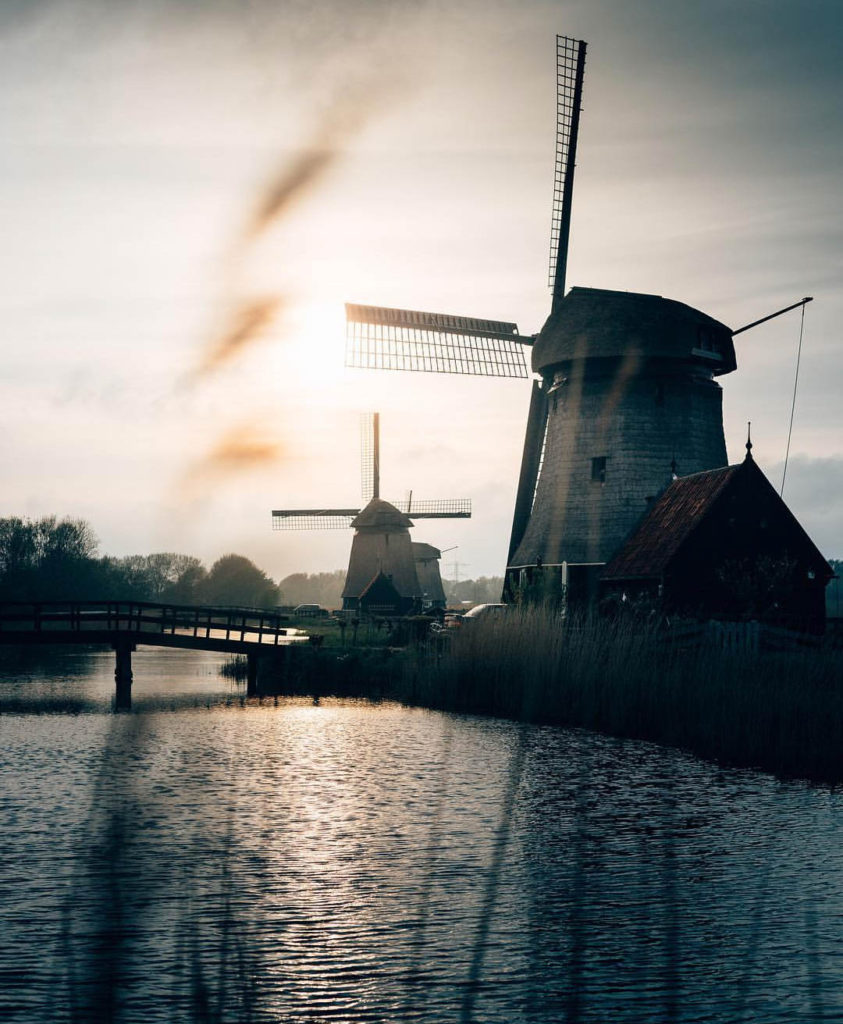Windmills and their strong impact on the Dutch society
Windmills
Their strong impact on the Dutch society
Until the 14th century, living conditions in Holland were pretty hard. The wetlands, swamps and marshes were certainly challenging and villages often got destroyed by powerful floods. In part, this is because one third of the country lies below sea level.
In 1421, in a particular bad flood, over 70 villages were washed away and thousands of people drowned. Although windmills are said to have existed in Holland from about 1200, it was about this particular time in history when mills became a strategic tool to keep the country safe and economically stable. This was possible by pumping water out of the lowlands and back into the rivers beyond the dikes so that the land could be farmed.
As such, water control played a major role in Dutch agricultural development. Overtime time, skills in hydraulic management improved, and large areas of new land were reclaimed.

In the 16th century, due to adjustments to the structure of the windmill, it became possible to use them for several other purposes, such as for the production of oil, paper and to saw timber. Water management and engineering was entrusted to professionals responsible for development and maintenance.
At that time, the Netherlands achieved the fastest per capita income growth in Europe. “From 1600 to the 1820s its level was the highest.” That level of economic success was highly influenced by hydraulic engineering. Besides the high degree of specialization achieved in agriculture, “the reliance on water control generated solidarity, which is still observable in Dutch society.” Low social inequality, universal healthcare and nutrition was part of the outcome.
Such factors contributed to the well-being of the population. The access to essential foods and dairy products are highly related with the extremely large height of its people for instance. “Dutch men are the tallest in the world!”
Today, more than 60% of the Netherlands is agriculture and horticulture. The country is one of the world’s biggest exporters, despite it’s small size, competing with China, the US and Germany for instance.
Although windmills do not have that strategic relevance any more, Dutch people made an excellent job maintaining the structures. Today there are over 1000 windmills in Holland. Some are still being used for drainage, such one of the nineteen that you can find in Kinderdijk, which is a great area to enjoy of these picturesque structures.
Rustenburg, located in the northern part of Holland, is also home to some of the best preserved windmills in the country!

Built around 1631, today this windmill known as Strijkmolen is an inner bar, like most of North Holland polder mills. There are other two mills in the area, all of them being surrounded by trees and flourishing plants. The landscape could not be more enchanting!
Although Dutch have restored many of the historic windmills, in general, these mills still preserve their original look, and that is something remarkable. Because windmills had a significant impact in the development of the country, once a year Holland holds the National Mill Day. 600 windmills and watermills around the country open their doors to visitors (including some of the historic mills that are no longer open regularly).






With thanks! Valuable information!